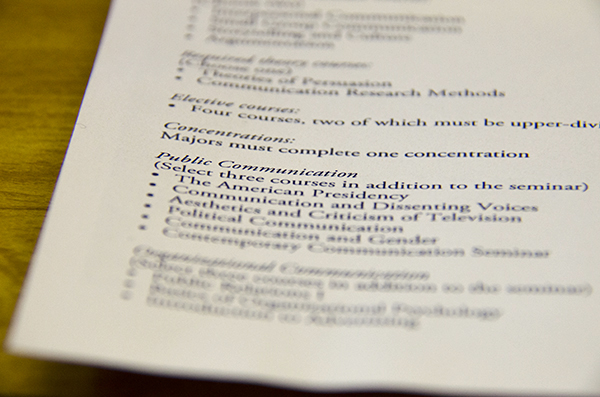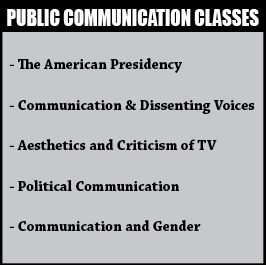

During a recent meeting, the Communication and Media department decided to phase out the public communication concentration of their communication major plan.
After two prominent faculty members who taught in the concentration departed for different prospective positions, and a historically low enrollment rate, the department voted in favor of gradually phasing out the concentration, Department Chair Jason Wrench said.
“We were already in the progress of [phasing the concentration out],” Wrench said. “I guess [the two professors leaving] was the impetus of it as we looked for the best way for the department to grow in the future.”
At the meeting earlier this semester, Wrench said the department discussed the ramifications of pushing students away from selecting the concentration of public communication and voted to make their intentions official.
Wrench said the department drafted a letter explaining the department’s intent, which was then sent to Dean of Liberal Arts and Sciences James Schiffer. The letter has since been sent to Provost and Vice President of Academic Affairs Philip Mauceri.
“It’s in limbo right now,” Wrench said.
Wrench said fewer than five students are enrolled in the concentration now, and other options in the major — such as organizational and interpersonal/intercultural communication — were more popular among students.
Professor Anne Goding, who serves as an advisor in the Communication and Media Department, said the department had been discussing a potential phase out of the concentration for over a year and many students who might have considered the public communication concentration would often switch to other majors.
“I’ve only been teaching at New Paltz for ten years, and during that time, the public concentration has not been a big draw,” Goding said. “I suspect that most students interested in the concentration are also interested in political science, which provides a wider array of courses. At this point, we have about five students left in the concentration.”
The public communication concentration is a nine credit concentration that included classes such as The American Presidency, Communication and Dissenting Voices, Aesthetics and Criticism of TV, Political Communication and Communication and Gender.
Despite the destressing of that route as a means of concentration, the option is still listed in communication and media catalogs, meaning the department will continue to honor those students who might wish to complete the concentration.
Wrench said in order to adhere to this, certain class requirements might have to be substituted for other classes.
There is no official timetable for the phase out to be completed, Wrench said.

